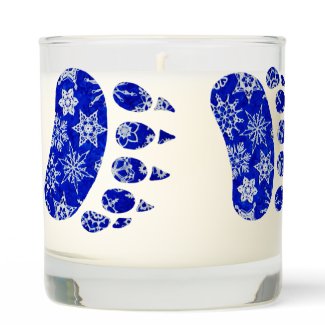I feel as if I've been fighting monsters all summer! And I'm not talking about my back.
First it was aphids. Then came spider mites. Then, then came the worst thing since grasshoppers... white... ick!
I first noticed the white slime-like stuff on an indoor tomato plant in July. I thought it was some sort of mold or bacteria. I'd bought three tomato plants and planted six more from seeds. Initially, all were inside because it was too cold outside, but also because I didn't want grasshoppers to feast upon the fruits of my labor again this year.
Daily I wiped the white stuff off the stems, but it kept coming back. I moved the tomatoes outside when it got warm enough, but also because I didn't want whatever the white stuff was to spread to my other indoor plants, especially my prized clove trees.
A couple of weeks later, I noticed the white stuff had invaded one of the hoya plants, the one that had been closest to the tomatoes. I was furious. This particular plant had belonged to The Lizard's father, who died several years ago. The plant had bloomed twice for me this year after years of nothing. The tomatoes still weren't blooming at this point, and I thought the plants I'd bought had started an epidemic on my indoor plants. Ooooh, was I ever steamed!
Wiping the slime off the branches didn't make it go away. It was time to get tough. But I didn't have any idea what I was dealing with. I looked up "white slime on garden plants" and learned lots of new things about gardening, but none of the culprits looked like what I had. By this time, I was cutting leaves off the hoya every day because it seemed to be getting worse by the minute. They also had spread to the outdoor plants, and now it seemed as if nothing would ever stop them.
I kept researching as much as I could, still not finding the proper diagnosis, until one day I noticed one tiny little dot of white moving. Um, this isn't a bacteria...
Finally, I found a magic search term that brought up the match. I looked up "white blobs on curly hoya rope leaves."
I had mealy bugs. And boy, did I ever have them bad!
The mealy bugs destroyed my dahlias and wind flowers. They spread to my peppers. I've even found them inside the watering can.
Gardening forums were very helpful once I knew what I was dealing with. If I'd been a paid member, I could have asked and probably found the answer a lot sooner. But I was a cheapskate and never paid for forum privileges.
I bought two tiny neem trees, and the cutlings came with a small bottle of neem oil, which the trees will not produce until they become more mature. Neem trees, natives of India, typically can't be left outdoors in Colorado, just like my clove trees, so they get to stay inside. The neem oil renders garden pests such as aphids, spider mites and mealy bugs unable to reproduce, but the oil has no harmful effect on praying mantises, lady bugs, bees, butterflies or humans. (or pets, of which we have none yet)
Neem oil requires some diligence and a high level of tolerance. It smells like rotten potatoes and must be reapplied to outdoor plants after a rain. It should be applied at least every three days until well after you think the infestation is gone because some of the pests have a 24-hour life cycle. Eggs hatching three days after one application will not be affected.
I also learned canola oil may be diluted with water and used to prevent infestations from taking fatal hold. But canola oil also apparently prevents plants from blooming, and it causes damage to leaves in drought-style sunshine. I learned this the hard way, along with how difficult canola oil is to remove from a wood floor if you're too scatterbrained to realize you need to put a towel down first before you spray.
The most effective treatment, in my experience, for SMALL gatherings of mealies, is isopropyl alcohol on a cotton swab. This method requires much patience and diligence, too, because it must be done every day. The undersides of leaves AND containers much be checked.
I've also used an insecticide derived from chrysanthemums, but I don't know yet if that works. I also received a bit of help from the ladybugs I bought earlier this year, although they flew off before the job was done. I'll be repeating that experiment next year. Even if they fly away, releasing the ladybugs was one of the most fun things I've ever done in the garden.
Tiny little spiders with outstretched arms eat the mealy bugs, I've found, and I think wasps, do, too. Hopefully I'll have a new army come next summer to aid in this battle.
One seasoned veteran of mealy wars said the best treatment may be to throw out everything and start all over again because they nest beneath leaves, pot rims, pots, anywhere they can find. He said once you have a mealy bug infestation, you always have a mealy bug infestation because they move to the next plant when you try to eradicate them and because they overwinter. (Another lesson I learned the hard way.) If you didn't solve the problem this year, they will be back next year, regardless of how cold it gets or how much snow piles up.
As it turns out, our mealy bugs may have originated in the hoya plant. It was so badly infested, I gave it a rubbing alcohol bath, and that still didn't cure the problem. I recently took the plant outside one more time and thoroughly inspected every single leaf, pulling off leaves too curly to check.
I haven't given up yet, but even The Lizard is ready to toss the plant and start over with a new one, one that doesn't have the sentimental connection this one has.
Two years ago, my grasshopper infestation was so bad, our backyard retaining wall was covered with them, mostly in mating mode, and any given step in the backyard would relocate at least 20-30 grasshoppers. In the neighborhood, there was talk of this being biblical in proportion.
I thought grasshoppers were bad.
Now I'm thinking the scariest costume anyone could come up with this Halloween is a mealy bug.































Oh no. I've fought spider mites (with varying success and many failures) over the years, but never had mealy bugs. How very frustrating! Those of us who live in a true four-season area look forward so much to the brief and precious gardening months. It's awful to have all your hard work go down the drain - or into the tummies of these nasty, spiky little critters.
ReplyDeleteGood luck in the battle. :)
P.S. I can't grow dahlias at all - yours is gorgeous. And "windflower" is such a beautiful word, with a blossom to match.
Only one of my six dahlia plants bloomed... the mealies got the rest of them. I don't know if I'm brave enough to try again next year. They are SUCH beautiful flowers! And I had some that were supposed to be the size of a dinner plate!
DeleteI want thread the color of the windflower. :D
yeah, I know bugs are necessary, well in some ways, but they can be horrible and attack and kill and just take the joy of a flower/garden/gardener away! I never have been a fan of bugs in masses either...yikes too creepy! Thanks for the useful tips....good luck!
ReplyDeleteI'm with you, Karen. I can tolerate the little arm-stretched spiders because I know they eat the bad guys. And I love ladybugs. But the rest give me the Halloween creeps!!!
DeleteSorry about your infestation. They get into grains, too - I've seen some scary rice situations with mealy bugs in the past.
ReplyDeleteEeeeeuuuuuwww! That would be incredibly scary! They do look a little like rice!!! ICK!!!!!!!!!!!!
DeleteAs for the bugs: ICK!
ReplyDeleteI LOVE that garden spider, though. She's not scary, she's gorgeous. Spiders get a bad rap in my humble opinion.
I'm with you, Jackie. It took me a while to acquire a taste, so to speak, for the spiders, but once I found out their main menu, well, I think I could even survive having one indoors. As long as it didn't multiply and replenish the whole house. :)
DeleteEwwww gross bugs! Hope you get rid of them.
ReplyDeleteThanks, Cat. I think I'm fighting a losing battle. All the tomatoes and two of the peppers are outside fending for themselves in the Colorado cold now, and I sprayed them with Raid. Goodbye, buggies!
DeleteTis a battle. The line about the watering can did make me smile, sorry.
ReplyDeleteOutright war, I think! I'm very happy to know you smiled at the watering can line. We have to appreciate joy wherever we can find it, right?
DeleteIndeed appreciate joy wherever you find it! I want to know if the ladybugs eat the mealies! I read some tips on keeping them from all flying away, which I will now have to find again. What I remember: releasing only some at a time, at night, on well-watered plants. But there was also something about having food they like, and I don't know if mealy bugs were on the list. Would love to read an update on how your mealywar turned out!
ReplyDeleteThanks, Dana! I haven't had any more mealy bugs, but I did end up having to throw out all the infected plants AND pots. I couldn't stop them from spreading, and I hear that's common. Yes, ladybugs, praying mantises and clear wings will all eat mealies, but a few garden helpers can't stop a full-scale war, unfortunately.
DeleteI just now dunked my entire 8 foot hanging hoya in a soapy water trough to knock back the mealies I've been in a long term battle with. Just wanted to say I got them in my hindu rope hoya though which is impossible to spray treat. I threw it outside last summer as a last ditch effort. Local predators took care of them and its been pest free for a year inside. I've heard similar stories for orchid growers. Not a bad last thing to try if the weather is right!
ReplyDelete